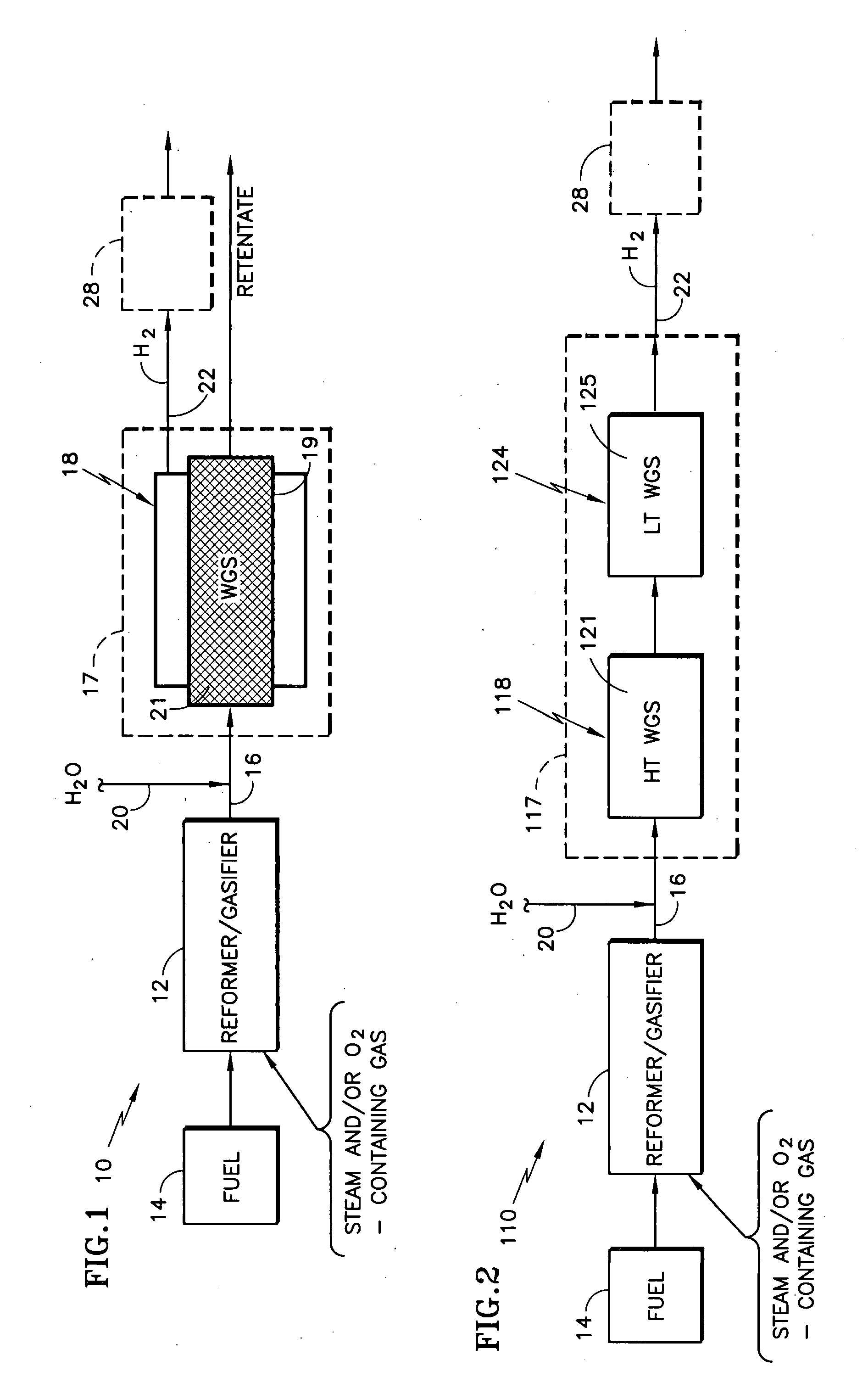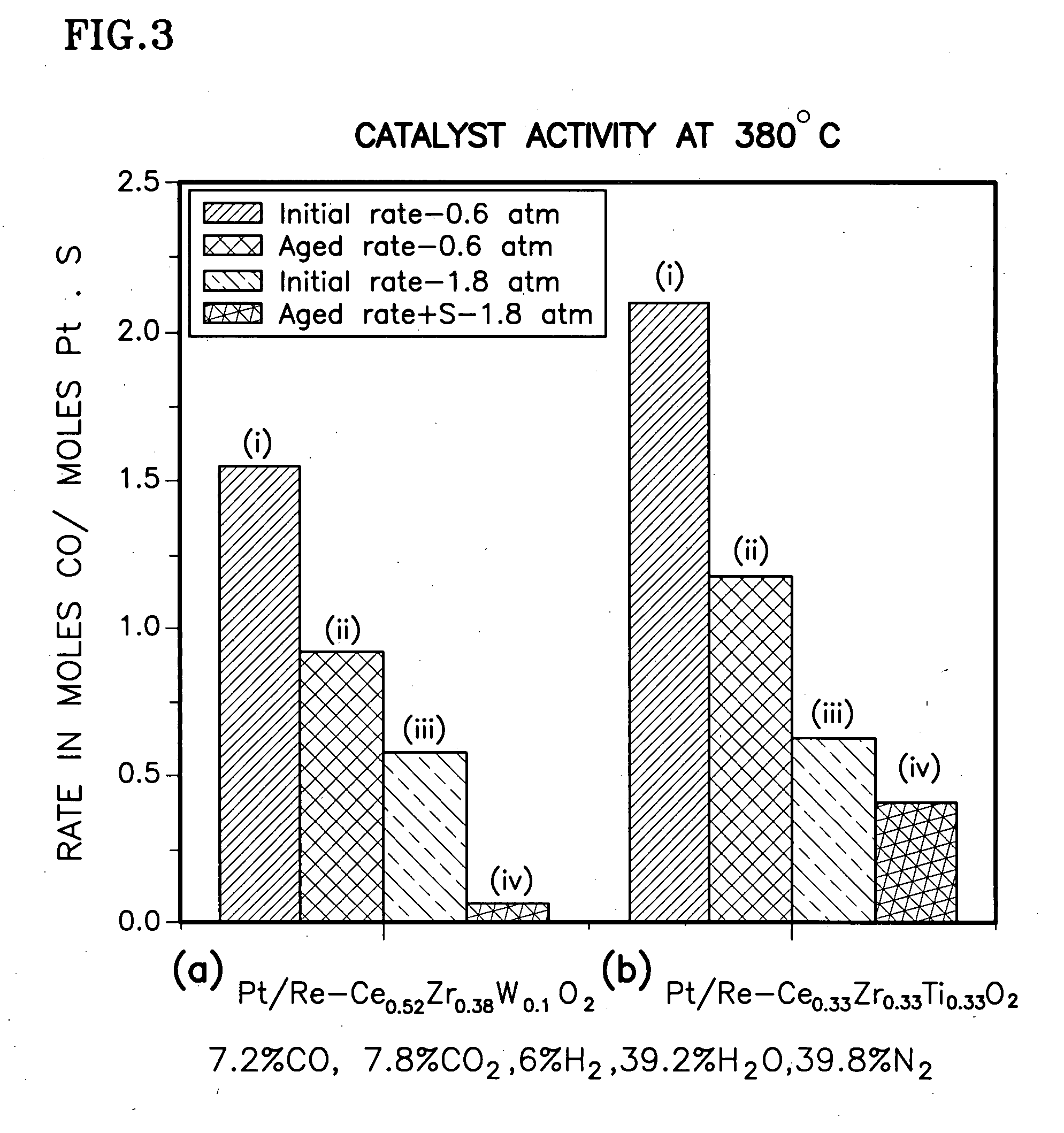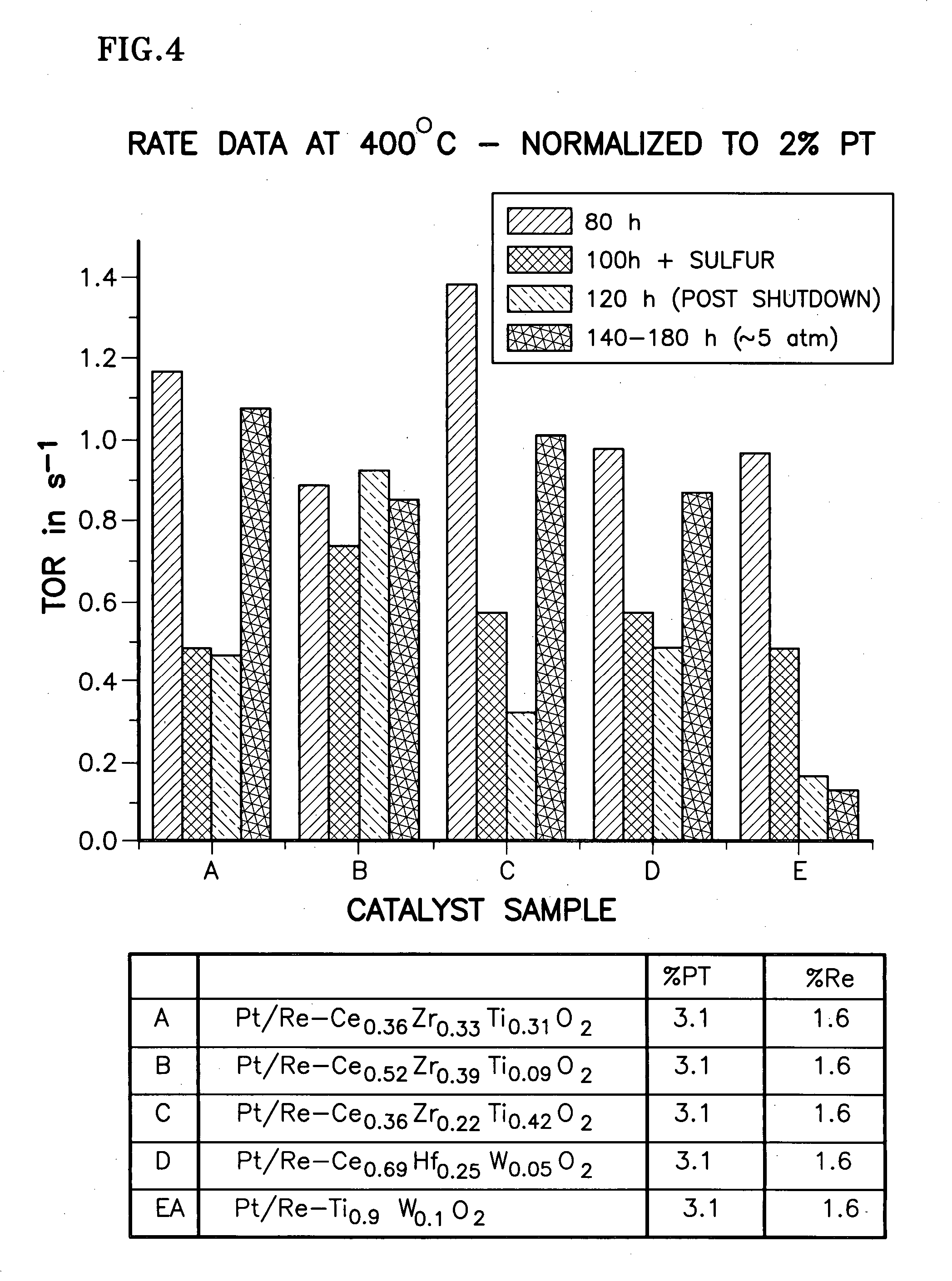Catalyst support of mixed cerium zirconium titanium oxide, including use and method of making
- Summary
- Abstract
- Description
- Claims
- Application Information
AI Technical Summary
Benefits of technology
Problems solved by technology
Method used
Image
Examples
example 1
Ce0.50Zr0.40W0.10O2 Support Synthesis
[0077] The following example demonstrates the method of preparing a nanocrystalline support material having the composition Ce0.50Zr0.40W0.10O2 (STWGS3-02). In a 12 L vessel on top of a stirring hot plate equipped with a large stir bar, 36.3 g of (NH4)2Ce(NO3)6 (0.0625 mol of Ce), 13.7 g of ZrO(NO3)2.xH2O (0.0500 mol Zr), 288 g of urea and 8,800 mL of deionized water are combined (Solution A). Separately, 3.55 g of (NH4)2WO4 was combined with 800 mL of deionized water and heated to 90° C. (Solution B). Solution A was heated to just below its boiling temperature. At this time, the urea began to hydrolyze and CO2 gas was evolved. Solution B was then slowly added to Solution A, and a slight turbidity was observed, followed by dissolution / clearing of the solution. Once the addition was complete, the temperature of the solution was raised to 100° C. to crystallize / coprecipitate the oxide from solution. The time between the W addition and the oxide pr...
example 2
Ce0.50Zr040Ti0.10O2 Support Synthesis
[0078] The following example demonstrates the method of preparing a nanocrystalline support material having the composition Ce0.50Zr0.40Ti0.10O2 (STWGS3-03). In a 12 L vessel on top of a stirring hot plate equipped with a large stir bar, 38.2 g of (NH4)2Ce(NO3)6 (0.0698 mol of Ce), 15.3 g of ZrO(NO3)2.xH2O (0.0558 mol Zr), 1,152 g of urea and 9,300 mL of deionized water were added. The combined mixture was stirred at room temperature until all the solids are fully dissolved. Because titanium does not exist in any of these forms as a stable salt, a pre-step to the process was implemented in which an organic titanium precursor, specifically in this case titanium isopropoxide, is converted to titanium oxynitrate by acidifying it in a 0.5M nitric acid solution under a flowing stream of nitrogen where the ratio of moles of titanium to moles of nitric acid is 1:2. To achieve an oxide support with the greatest surface area and smallest crystallite size...
example 3
Ce0.33Zr0.33Ti0.3302 Support Synthesis
[0079] The following example demonstrates the method of preparing a nanocrystalline support material having the composition Ce0.33Zr0.33Ti0.33O2 (STWGS3-01). In a 12 L vessel on top of a stirring hot plate equipped with a large stir bar, 29.2 g of (NH4)2Ce(NO3)6 (0.0533 mol of Ce), 14.8 g of ZrO(NO3)2.xH2O (0.0533 mol Zr), 1,152 g of urea and 9,300 mL of deionized water were added. The combined mixture was stirred at room temperature until all the solids are fully dissolved. Separately, in a 3-neck round bottom flask equipped with a stir bar, a nitrogen purge line and an outlet bubbler, 36 mL of 3M HNO3 was added. The flask was placed in an ice bath on top of a stir plate and the acid solution was left to chill. Separately, in a nitrogen purged glovebox, >16 mL of [(CH3)2CHO]4Ti (0.0533 mol Ti) was transferred into a 30 mL borosilicate vial and capped with a crimp top lid using a hand crimper. This prevented any exposure of oxygen to the [(CH3)...
PUM
| Property | Measurement | Unit |
|---|---|---|
| Temperature | aaaaa | aaaaa |
| Temperature | aaaaa | aaaaa |
| Temperature | aaaaa | aaaaa |
Abstract
Description
Claims
Application Information
 Login to View More
Login to View More - R&D
- Intellectual Property
- Life Sciences
- Materials
- Tech Scout
- Unparalleled Data Quality
- Higher Quality Content
- 60% Fewer Hallucinations
Browse by: Latest US Patents, China's latest patents, Technical Efficacy Thesaurus, Application Domain, Technology Topic, Popular Technical Reports.
© 2025 PatSnap. All rights reserved.Legal|Privacy policy|Modern Slavery Act Transparency Statement|Sitemap|About US| Contact US: help@patsnap.com



